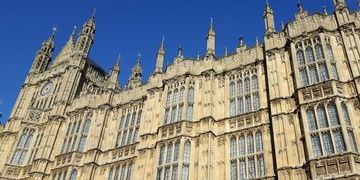On the eve of the Autumn budget, James Tooze reviews some key figures outlining the landscape of business investment in R&D in the UK.
Business investment in R&D continues to rise: CaSE analysis
21 Nov 2017
Business investment continues to grow
In the continuation of a long-term upward trend, business enterprise research and development (BERD) statistics from the ONS showed that business investment in the UK grew from £21bn in 2015 to £22.1bn in 2016. This increase represents a 5.6% annual growth, while the average annual growth rate since 2004 sits at 4.8%.
Private investment in R&D has consistently dominated the overall spend on research in the UK, typically accounting for 65 – 70% of the total purse. Government investment in R&D has also been growing over the same period, but with an average growth rate of 2.5% since 2004. This annual growth in government investment looks set to shift further upward, following the announcement in last years’ Autumn Statement of increased public R&D investment.

The increase in R&D expenditure, despite over half of the year being in a post-referendum Britain(!), is encouraging for the future of research in the UK. However, the majority of investment decisions will have been made over a longer period of time, meaning that plans would have most likely been implemented before the Brexit vote. As you could perhaps expect, the scientific R&D industry accounted for the biggest share of business investment, totalling £5.3bn in 2016. This, along with manufacturing of motor vehicles, other transport and equipment, and computer programming, consultancy and related activities made up over 50% of business investment in R&D.
Employment in R&D reaches all-time high
Today’s statistical release also showed that the levels of those employed by UK-based business on a Full-Time Equivalent (FTE) basis has reached the highest ever levels. This includes not only scientists, researchers and technicians involved in R&D, but also administrative staff employed by businesses performing R&D.

While this upward trend is good news, it is useful to consider this rise within the context of the overall labour market in the UK, as employment has increased across the board over recent years. That doesn’t mean we can’t still celebrate it!
Regional disparities in business R&D spend persist
While the overall business investment has been increasing, there still remain inequalities in the amounts of money that businesses invest across the UK. The majority (91%) of UK R&D expenditure was carried out in England in 2016. Businesses in England spent the equivalent of £366 per head of population on performing R&D, more than the other countries of the UK, with Northern Ireland spending £258, Scotland spending £198 and Wales spending £140. Despite these inequalities, Scotland and Wales were two of the regions that saw the largest proportional increase in R&D funding between 2015 and 2016, at 12.5% and 18.2% respectively. London saw the biggest proportional increase in investment over the last year, while the North West also enjoyed a sizeable increase in business R&D investment.
| Regional expenditure on R&D performed in UK businesses, 2015 to 2016 | |||
| £million | |||
| 2015 | 2016 | % change | |
| UK | 21,038 | 22,224 | 5.6 |
| North East | 306 | 302 | -1.3 |
| North West | 2,116 | 2,346 | 10.9 |
| Yorkshire and the Humber | 769 | 750 | -2.5 |
| East Midlands | 1,531 | 1,655 | 8.1 |
| West Midlands | 2,159 | 2,303 | 6.7 |
| East of England | 4,200 | 4,393 | 4.6 |
| London | 1,892 | 2,296 | 21.4 |
| South East | 4,765 | 4,693 | -1.5 |
| South West | 1,476 | 1,500 | 1.6 |
| Scotland | 953 | 1,072 | 12.5 |
| Wales | 368 | 435 | 18.2 |
| Northern Ireland | 501 | 481 | -4.0 |
| Source: Office for National Statistics | |||
Foreign business ownership in 50:50 split
In the last quarter of a century, the number of foreign-owned businesses conducting R&D in the UK has steadily grown. In 2013, foreign-owned business accounted for 54% of UK-based businesses performing research, but that number is now a precise 50:50 split in businesses having UK ownership or foreign ownership.

UK business becomes less reliant on foreign investment
Despite the large number of foreign-owned business working in R&D in the UK, the overall reliance on overseas funding has decreased since the turn of the decade, despite overall increases in business R&D investment. This means that of these foreign-owned businesses operating in the UK, and other all UK based businesses who relied on foreign investment, have been able to invest more of their own money into their R&D activities.
Since 2010, UK funding of businesses’ expenditure on performing R&D has increased by £6.5 billion to £18.7 billion in 2016. Over the same period overseas funding has experienced little change, with a drop of £301 million to £3.5 billion in 2016. As a proportion of total funding of UK business R&D, overseas funding has reduced by 8% from 24% in 2010 to 16% in 2016.
We have taken these statistics from the ONS website, namely the Business enterprise research and development, UK: 2016 statistical release. The ONS also produce an informative brief on the statistics.
Related resources

This synthesis draws out key policy implications from the findings of a report commissioned by the British Academy and CaSE. The systems-based analysis of the strengths and weaknesses within the UK’s innovation system, ‘From Research to Productivity: A Systems Analysis of UK Innovation Pathways’, was conducted by Cambridge Econometrics.

In 2024, the British Academy and CaSE commissioned Cambridge Econometrics and the Innovation and Research Caucus to conduct this systems-based analysis of the strengths and weaknesses within the UK’s innovation system.

CaSE’s comprehensive analysis of the measures that impact R&D announced in the 2025 Spending Review

CaSE’s response to the House of Lords Science, Innovation and Technology Select Committee inquiry into: Financing and Scaling UK Science and Technology: Innovation, Investment, Industry.